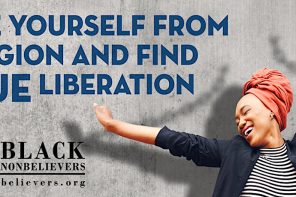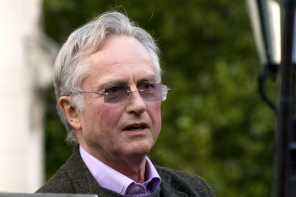Out of Our Heads: Why You Are Not Your Brain, and Other Lessons from the Biology of Consciousness
by Alva Noë
(Hill & Wang, 2009)
Alva Noë is a cognitive scientist and philosopher at the University of California, Berkeley, who has spent the last 15 years working with researchers studying consciousness and how it works. His new mind-altering book, Out of Our Heads: Why You Are Not Your Brain, and Other Lessons from the Biology of Consciousness, addresses a philosophical mystery: how do we know that we are who we think we are? How do we really know that other people are conscious? And if there is such a thing as consciousness, what is it, where is it, and how does it happen?
A fundamental assumption among neuroscientists is that consciousness is a strictly neuroscientific phenomenon. Noë quotes Francis Crick, co-discoverer of the double helix, who nicely sums up the orthodox scientific view:
“You, your joys and your sorrows, your memories and your ambitions, your sense of personal identity and free will, are in fact no more than the behavior of a vast assembly of nerve cells and their associated molecules… This hypothesis is so alien to the ideas of most people alive today that it can truly be called astonishing.”
Except that such a claim is hardly astonishing at all. In his First Meditation, seventeenth-century philosopher René Descartes observed that there’s no concrete way of determining what we experience is not a dream, because the objective methods we use to make such determinations (like pinching ourselves) might also be a dream. Descartes then looked beyond the senses to justify the world; to understand what we think and feel and see from a detached perspective. He concluded we are a reflection of some kind of immaterial “thinking thing” that somehow yields consciousness.
For Crick and other brain researchers, this “thinking thing” is the actual physical human brain. And it’s here and only here, Noë writes, that the orthodox scientific view of the mind breaks significantly from the philosophical tradition. The truly astonishing thing to say, he writes forcefully, is that consciousness is not in the brain.
Which leads us to Noë’s thesis.
Scientists know two things for sure. One is that consciousness requires a nervous system. The other is that mammals have a nervous system. Everything else, despite all advances in technology, including brain scans, has proved nothing as decisive as Crick & Co. would have you believe. Noë goes a step further to argue that neuroscience is moving forward on faulty assumptions, namely that the mind is in the brain.
Consciousness, he argues, and all the things that that word means (thinking and feeling and the fact that the world shows up for us, to use Noë’s turns of phrase) does not originate from the brain the way digestive acids originate from the stomach, or the way light originates from the lens of a movie projector. Consciousness is the product of a living organism dynamically interacting with the world around it. Noë argues for a biological understanding of who we are. And if the clarity and force of his case doesn’t change everything, it changes a lot.
Lose Your Illusion
The idea that what we think, sense, and feel is an illusion goes back to Plato. In his Allegory of the Cave, the philosopher has his teacher, Socrates, tell Plato’s older brother, Glaucon, the story of a race of men who have lived all their lives chained to the floor of a cave. Their only experience of reality comes from shadows dancing on a blank wall in front of them. The philosopher, the lover of wisdom, seeks out the true nature of these forms, which are only representations of reality, a degree removed from ultimate reality.
Skepticism over what we see and hear and think and feel has endured throughout the centuries. Gnostic Christians believed matter was evil; George Berkeley, the English philosopher, denied that matter existed at all; George Orwell infused what Noë ends up calling the “grand illusion theory” with political paranoia over the covert uses of state power; Philip K. Dick, the science fiction visionary, added a technological dimension (in Blade Runner, is Deckard a man or an android, and how can we tell the difference?); The Matrix Trilogy, as Adam Gopnik has pointed out, is probably the latest version of this story—a hero freeing human beings from their roles as organic batteries cultivated to power a race of evil machines.
There is a more frightening proposition: that other people are in fact shadows cast on the wall. How do we know others are not a dream? Even observable behavior is a poor indicator. Take the fact of Kismet, a robot engineered at MIT to imitate a range of human attitudes and emotions. The result is a convincing simulacrum of social exchange between a nonthinking and nonfeeling robot and students who were very much thinking and feeling. So what proof is valid proof? “If what people say and do, and measurements of what their brains are doing, are the best we have to go on,” Noë writes, “then it would seem that our commitment to the minds of other is philosophically ungrounded, a mere act of faith.”
But it isn’t.
A True Article of Faith
We do not live in a world that requires knowing whether someone is conscious, Noë writes. From birth, we inhabit and influence an emotional, physical, and symbolic exchange between minds. In short, we are “always already in a shared context,” he writes. Only in extraordinary circumstances, like that of the persistent vegetative state, do we seriously doubt someone’s consciousness. Even then, Noë argues, it’s not someone’s consciousness that comes into question but our relationship to that person. “The question of whether a person is in fact a conscious person is always a moral question before it is a question about our justification to believe,” Noë writes. “A detached perspective… is incompatible with the more intimate, engaged perspective that we actually take up to each other.”
We don’t need a reason to believe in others’ consciousness, and by extension in our own quality of mind, because believing in others’ minds is not theoretical. It’s practical and moral, because it’s contextual. We live a life of organisms evolved to possess certain skills (vision, say) and tools (language) that dynamically interact with their environment. To occupy a position outside that context—what Noë calls intellectualist, Cartesian, and later, when he discusses language, Chomskyian—is to deny the fact of that organism’s biology or to admit insanity. From a biological perspective, he writes, we are involved, tangled up, and invested in the world. Consciousness cannot be understood as beginning and ending with the brain, but as the brain working in context. “For what we bearers of consciousness are… depends on where we are and what we can do.”
He compares the brain to money. In and of itself, a dollar is just a cipher. The paper’s value is less than $1. But as the paper moves with the ebb and flow of commercial exchange and governmental oversight, the paper takes on a symbolic significance that endows the cipher with meaning and hence worth. For a dollar, value is the result of action. Same with consciousness. Money isn’t alive like, say, a germ. But germs, despite their primitive makeup, seek out what’s valuable to them: food, sex, heat, etc. In this way, being alive presupposes agency, which in turn gives rise to consciousness.
Just as you can’t understand the value of a dollar by looking at the paper it’s printed on, you can’t understand the mind of a germ by looking only at its relatively simple makeup. “Once you see the organism as a unity, as more than just a process,” Noë writes, “you are, in effect, recognizing its primitive agency, its possession of interests, needs, and points of view. That is, you are recognizing its incipient mindfulness.”
A stunning illustration of the fact that consciousness does not arise from the brain alone but from the brain’s exchange with its environment comes from the curious case of the rubber hand. In 1998, two researchers reported in the journal Nature the results of an experiment in which participants sat at a table opposite a rubber hand. They watched the rubber hand being tapped and stroked with a paint brush while at the same time their actual hands, hidden from view under the table, were also being tapped and stroked in time with the rubber hand. Given time, “something remarkable happens,” Noë writes. “You have the distinct feeling that you are being touched on the rubber hand: that the feeling of being touched that is, in fact, occurring on your own, connected right hand under the table is taking place on the rubber hand!”
The cause for this phenomenon is something called “visual capture.” Basically, our sense of vision overrides our sense of touch. The implication is clear, Noë writes. Being connected to your hand is not necessary to sensation (i.e., experiencing the world around you). In other words, the old understanding of how the brain works doesn’t make sense here: that your senses, in this case touch, send information to the brain for processing, which yields consciousness. Given the results of the rubber hand illusion, consciousness is not inside you, sealed off and hidden from view. It’s inside you vis-à-vis outside you. It suggests you are more than just your brain.
Throughout Out of Our Heads, Noë’s strategy is to undermine conventional views of mind defended by the likes of Crick, Dennett, and Richard Dawkins, three of the most vocal champions of the prevailing Cartesian school—that we are our brains (or “thinking things”) and that the world we encounter is a representation of the brain.
Noë challenges this by turning upside-down what would normally be convincing evidence that the brain really does create a world for us. This evidence comes from an experiment in perceptual psychology by Harvard researchers that went like this: A college student stops a professor on campus to ask for directions. While the professor is explaining where to go, two workmen walk between them carrying a large door, blocking the professor’s view. He doesn’t see that one of the workmen switches places with the college student. By the time they part ways, the professor has failed to notice he began the encounter speaking with one person and ended it with something else. This has been dubbed “change blindness.”
Change blindness appears to be proof positive that the brain fabricates a mental picture of the world based on information that does not exist. We live in a delusion, therefore, a world of shadows. The goal of neuroscience, then, much like the goal of philosophers in Plato’s day, is to figure out why the world appears to us as a complete picture when in fact it isn’t.
This might be true is we did form complete pictures of the world in our minds. What undermines the grand illusion theory is that we don’t, Noë writes, and we don’t actually believe we need to. What matters when it comes to visually engaging the world, he says, is not having an image of the world in your mind, but having access to it. Having access depends on having skill—knowledge and experience of how changes to one’s body, like moving your head, changes how and what you see in the world and what kinds of access you will have to it. For instance, you don’t need to see from a three-quarter perspective all four tires on an Indy racecar to know it has four tires. You know the fourth tire is present, because Indy racecars have four tires. And you can expect to see the fourth tire if you walk around to the other side. You have access to it because you have skill.
More importantly, we can expect to see that fourth tire not only because we have the skill to see it, but because the world is in fact stable. “Our perceptual skills have evolved for life on Earth,” Noë writes, “not life in an environment in which objects material and vanish at the whim of supernatural deceivers.”
If we are in fact empty heads turned toward one single self-evident world, as the French philosopher Maurice Merleau-Ponty famously said, whence then is the grand illusion? Indeed, the Cartesian school’s reductionist consciousness-in-the-head paradigm begins to seem more like religion than science.
And given that it carries on a tradition that began with Descartes, that makes a kind of sense. Descartes invented an immaterial Church-approved, soul-like “thinking thing” in the absence of empirical evidence that the world isn’t a dream. Crick, Dennett, and others do the same—only instead of a soul-like thing, they assert that the brain is the soul. This, Noë writes, “represents, it seems, something like an article of faith.”
God is Back
Ironically, religion is surely what Crick was thinking of when he announced his astonishing hypothesis: that our hopes and fears and thoughts and memories were just neurochemical reactions in the brain. Most people hold religious sentiments of one kind or another. Even if they don’t, Western culture stands on a deep-seated conviction that humans are more than the sum of their parts. Claiming authoritatively that we’re just brains in vats is an indirect challenge to such sentiments. That same spirit of subversion has been behind a recent wave of books lambasting religion.
Yet the ascent of thinkers like Dawkins, Dennett, and Sam Harris is just one more chapter in the history of science’s victory to becoming the ultimate arbiter of truth. For most of the past century, the humanities, and its penchant for complex theories privileging nurture over nature, directly competed with science for that distinction.
As Elaine Glaser has noted in New Humanist, the so-called “science wars” at the end of the 20th century ended in 1996. That’s when physicist Alan Sokal managed to publish an article in the journal Social Text that was in fact a collage of postmodern literary theory. It was essentially a hoax. Science won and has been winning since. Glaser wrote:
“The humanities receded from battle, cowed by the reductive powers of scientific fundamentalism, embarrassed by the now unfashionable discursiveness of literary and sociological theory, and paralyzed by a quandary over the question of where value in humanities research actually resides.”
With the decline of the humanities has come a global resurgence of religion; one that’s being fueled by a fulsome mix of free-market ideology and American-style separation of church and state. Even areas of the globe that previously sanctioned atheism are witnessing the flourishing of religion thanks to harmonizing overtones of 21st-century modernity and faith. As John Micklethwait and Adrian Wooldridge put it in their book God Is Back: How the Global Revival in Faith Is Changing the World: “The very things that were supposed to destroy religion—democracy and markets, technology and reason—are combining to make it stronger.”
History, it seems, set the table to the obvious: “Science has trained its sights on religion as its new enemy,” Glaser observes.
Yet, as Glaser notes, science can’t say much about faith, because faith isn’t about verifiable, replicable evidence in support of universally applicable hypotheses. It’s about, well, faith. It’s something that doesn’t need to be tested—at least not via scientific method.
That, however, hasn’t stopped people like Jared Diamond and Daniel Dennett, who are convinced that religion is a delusion and the humanities a mere avocation. Books like Dennett’s Breaking the Spell: Religion as a Natural Phenomenon are only going to affirm materialists’ feelings of superiority while irritating everyone else. If Micklethwait and Wooldridge are right in saying religion is likely to characterize world politics and the balance of power for the rest of the century, it’s going to take more than dismissive scientists to address this new globalized economic reality. Hence, the import of Glaser’s recommendation that we recall the value of the humanities: “their ability to critique the rise of religion historically, politically, and culturally.”
A Bridge Between Worlds
Noë’s book is relevant and valuable far beyond its thesis that consciousness is not synonymous with the brain: Out of Our Heads represents a remarkable bridge between two cultures. Noë admits a political objective: get science and the humanities talking again. They have a lot to say, if only they could get over themselves.
“The idea that science and philosophy, or the humanities more generally, are separate spheres with their own standards and criteria is itself a bit of a questionable ideology, a relic of the enthusiasm of an earlier modern age.”
The common goal is obvious to anyone with common sense: an understanding of the world, especially of human nature. It is no hyperbole when Noë says, “I am writing this book to change the world.”




